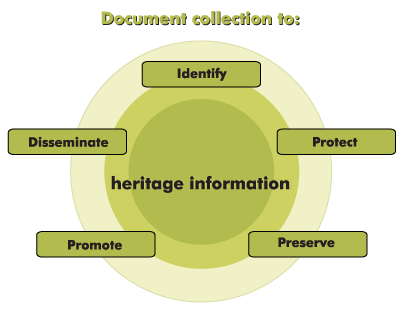Why Should We Document Heritage Collections?
In the introduction to the work Documenting the Cultural Heritage, published in 1998, it is stated that heritage documentation is "indispensable, for the purposes of identification, protection, interpretation, and physical preservation of movable objects, historic buildings, archaeological sites, and cultural landscapes. They occupy a significant place in all major international conventions relating to the protection of heritage."
Heritage institutions have two responsibilities that make the documentation of collections important:
- Responsible collection management, which is ensured through the identification, protection and preservation of collections.
- Collection interpretation and development, which is ensured both through access to information and through access to collection objects.
The best way to preserve collections is not only to preserve their physical integrity but also, and more importantly, to acquire in-depth knowledge of them and to be able to identify and interpret them correctly.
- An object is adequately protected only if it is well documented. Having information on collections is therefore essential for ensuring effective and efficient management of cultural heritage.
- An object can be properly understood and promoted only if it is adequately documented. Knowing your collection well also contributes to the logical development of the institution's collections. By gaining a better understanding of your collection's contents, you will find it easier to determine the direction the collection should be taking and to identify gaps or strong points that need to be highlighted - hence the importance of having documentation that is as consistent and comprehensive as possible.

In short, proper documentation facilitates:
- identification of objects;
- recording and maintenance of the museum's objects;
- access to the objects;
- object protection and preservation;
- access to information;
- updating of information;
- preservation of information.
Adequate documentation promotes sound management and proper enhancement of the collection.
Contact information for this web page
This resource was published by the Canadian Heritage Information Network (CHIN). For comments or questions regarding this content, please contact CHIN directly. To find other online resources for museum professionals, visit the CHIN homepage or the Museology and conservation topic page on Canada.ca.
Page details
- Date modified: